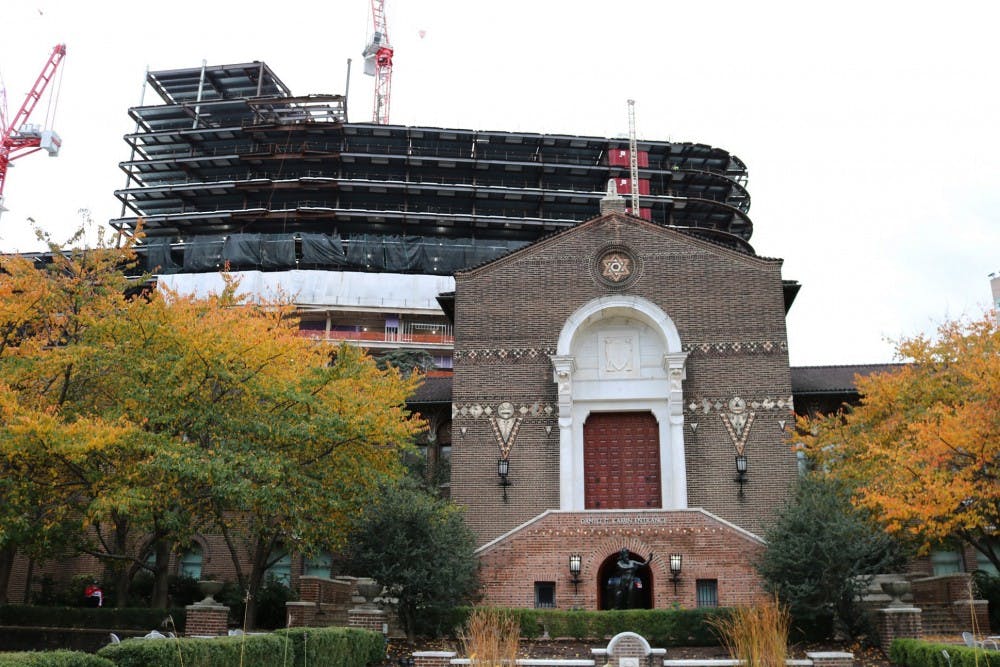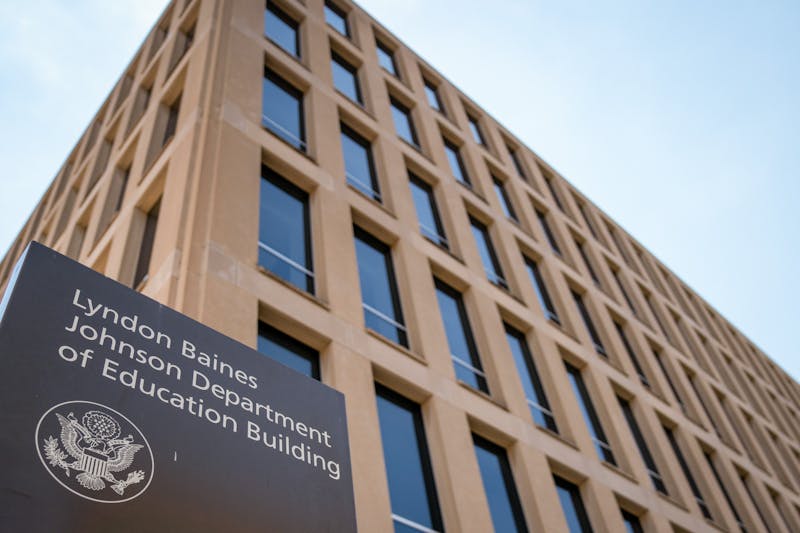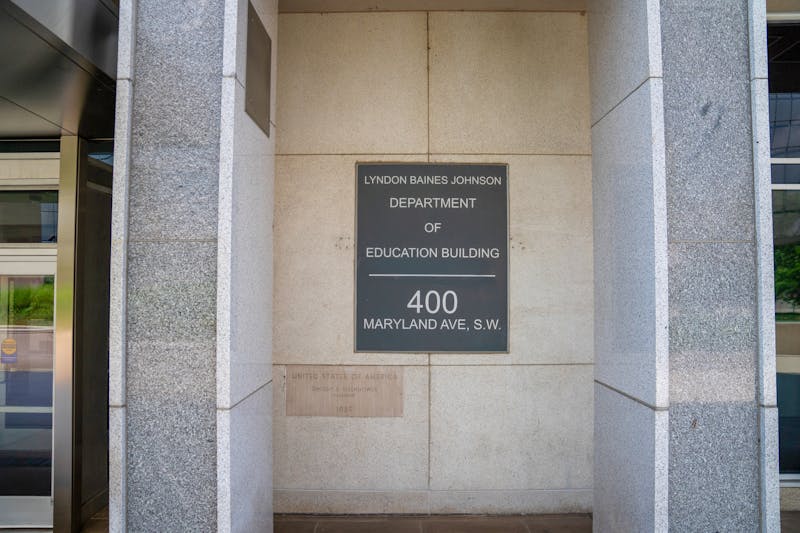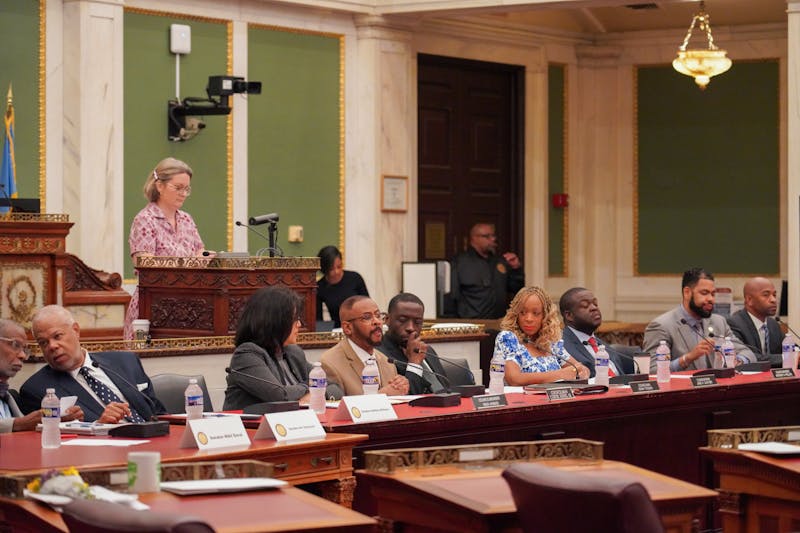
In the 18 months since Penn Medicine broke ground on the construction of the $1.5 billion Pavilion for the Hospital of the University of Pennsylvania, HUP's neighbor, the Penn Museum, has had to take steps to protect itself from the reverberations caused by the construction.
The Penn Museum has closed an exhibit, installed vibration sensors, and added rubber isolation tables to prevent damage to the mummies and to the one million artifacts kept inside. Sound insulation was also installed on the south side, but Penn Museum's Executive Director of Galleries, Dan Rahimi, said classes and meetings are sometimes still interrupted.
In May of 2017, the Pavilion, the University's largest capital investment in history, officially went under construction. It is being built just near the Penn Museum, which first opened in 1899 on the east side of campus.
The artifacts that are most affected by the construction are located inside the Egypt Gallery, which currently has many displays moved away, Williams Director of the Penn Museum Julian Siggers said.
Currently, the Upper Egypt gallery remains open while the Lower Egypt gallery, which houses the largest sphinx in North America, is closed. A temporary Egyptian exhibition will be open to the public in February 2019, which Siggers said will display some of the currently unavailable artifacts.
The museum is undergoing construction of its own: Nearly $20.7 million in renovations have closed exhibitions to the public until next fall — including the galleries of Africa, Mexico and Central America. Part of the project will focus on renovating the auditorium, adding two elevators, and constructing a new loading dock with better climate and security controls. A new park will also be added near the hospital and the museum, Siggers said.
In 2016, the museum installed vibration sensors as a precaution to protect the building’s contents from potential damage from HUP's construction. The sensors detect vibrations up to one millimeter per second, and provide construction workers with continuous updates. The sensors are especially helpful for floors, shelves, and cases that can amplify the nearby construction's vibrations.
In addition to these sensors, Special Projects Manager Robert Thurlow said the museum has added rubber isolation tables so that the mummies will not be damaged by the vibrations.
Other Egyptian artifacts have already been removed and are currently stored away at an off-site storage facility, Thurlow said. He added that he hopes the artifacts will be returned in fall 2021.
Despite fears that the construction can potentially damage artifacts, Rahimi said there hasn’t been any damage to artifacts inside the museum during construction over the past several years. The most dangerous construction, he added, including the 2015-16 demolition of Penn Tower and the digging of the site's bedrock, has passed without significant problem.
College junior Zoe Macartney, who works in the museum, said the noise can be disturbing, and she added that the construction looks visually unpleasing and overbearing.
“The museum isn’t a really tall building and the construction that is going up around it is super tall," Macartney said. "It kind of blocks a lot of the sky now."
The construction hasn't been all bad for the museum, though. Siggers said that their new neighbor has significant potential and may be a big opportunity for the museum.
“They’re building a pedestrian walkway between the hospital and the museum,” Siggers said. “So we see that as a great way to get people coming to the hospital, but also come to the museum, as well.”
Thurlow said that in previous years, masonry was most often used for construction at the museum. The museum's current renovation is looking to integrate different materials, including stronger substances for the Egypt Gallery's floor.
Despite internal renovations, Rahimi said the museum is a historic building, so nothing external can be changed without city permission.
The Daily Pennsylvanian is an independent, student-run newspaper. Please consider making a donation to support the coverage that shapes the University. Your generosity ensures a future of strong journalism at Penn.
Donate






